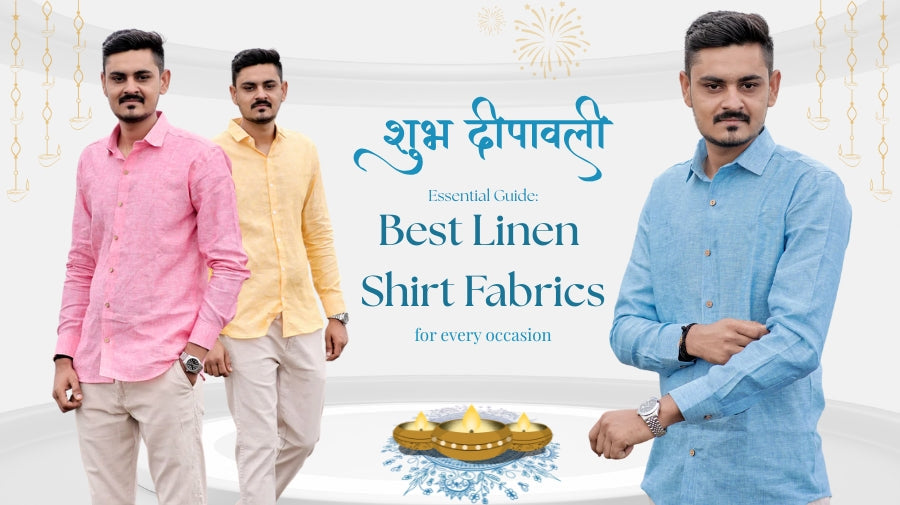In an age of fast fashion and fake materials, linen stands as a quiet but forceful advocate for what clothes can be--natural, breathable, lovely, and enduring. His or her experience with linen speaks for itself: cool to the touch, light as air, replete with earthy appeal.
But what is linen? How is it made? And why is it so highly respected as a sustainable and conscious fashion fabric?
Here at Linenwear, we like to think that there's no such thing as knowing too much about your fabric, and that loving the way it looks is just half the story. So let's take a look at where linen actually comes from and how this old-school fiber rose to become one of the most adored fabrics of all time.
|
Table of Content 1. What is Linen? 2. Where Does Linen Come From? 3. The History of Linen: Woven Through Time 4. Why Linen is a Sustainable Superstar 5. What Linen Feels Like to Wear 6. From Field to Fabric: The Journey of Linen at Linenwear |
1. What is Linen?
Linen is a natural fabric based on the fibers of the flax plant (Lignum usitatissimum). With its durability, breathability, and sophistication, linen has been used for clothing and domestic textiles for thousands of years.
As opposed to man made textiles (such as polyester or nylon), linen is plant based, biodegradable, and extremely eco friendly. It has a rich, textured texture that softens with age and has a distinctive tactile feel cool in the summer, warm in the winter.
What Makes Linen Special:
- Moisture wicking and breathable
- More durable than cotton
- Skin friendly and hypoallergenic
- Biodegradable and eco friendly
- Gets softer with washing
From light summer tops to elegant dresses, linen suits all seasons and fashions making it a go to for mindful wardrobes around the globe.
2. Where Does Linen Come From?
Linen is derived from the flax plant, a crop that has been around for thousands of years and grows well in cooler temperatures with good drainage. The process from seed to textile is steeped in traditional farming and environmentally friendly techniques.
The Flax Plant:
- Grows primarily in Europe (France, Belgium, the Netherlands) and regions in India, Egypt, and China
- Is harvested for fiber (linen) and seeds (used as linseed oil and as food)
After maturation, the flax stalks are drawn from the earth (not harvested by cutting) in order to maintain the integrity of the fiber length. They are then dried, retted (a process of natural fermentation to release fibers), and separated mechanically by combing before spinning into yarn.
This natural, manual process is one reason linen is so pure, long-lasting, and unique.
3. The History of Linen: Woven Through Time
Linen boasts an ancient and honorable heritage.
- The Egyptians employed linen as funeral shrouds for pharaohs, who considered it a symbol of purity and light.
- In the ancient world of Greece and Rome, it was worn for its cooling nature and smooth texture.
- Through the Middle Ages, linen formed the basis of luxury bed linens and clothing among royalty.
- To this day, linen is a fashionable fabric of sustainable fashion, quality tailoring, and artisanal work.
Linen's tale is not one of cloth it's about culture, craft, and the timeless human affinity for nature.
4. Why Linen is a Sustainable Superstar
In a time of climate emergency and overproduction, linen shines as a truly eco friendly choice. From its low-impact cultivation to its completely biodegradable status, linen is fashion's true sustainability hero.
Here's Why:
- Low water usage (far less than cotton)
- No chemical synthetics needed for cultivation
- Zero waste: Every part of the flax plant can be utilized
- Naturally biodegradable: Degraded in compost within months
- Long-lasting: Fewer replacements equate to less waste
At Linenwear, we’re proud to work with pure linen sourced responsibly, crafted into timeless garments that don’t just look good they do good.
5. What Linen Feels Like to Wear
Wearing linen is like wearing a zephyr. Its loosely woven fibers provide the utmost in ventilation, which is why it is the fabric of choice for hot and humid climates. And that's not all about linen it naturally controls body temperature, staying cool in the summer and cozy in colder weather.
With use, linen softens, becomes more supple, and acquires a seasoned texture that gives it character. It doesn't hug your body and lets air circulate around your skin, making it perfect for everyday ease and effortless chic.
At Linenwear, we create linen clothing that:
- Motions with your body
- Ages beautifully
- Makes you feel confident, earthy, and effortlessly stylish
6. From Field to Fabric: The Journey of Linen at Linenwear
At Linenwear, we don't sell clothes telling the linen story from soil to stitch is what we're in the business of.
Our process prioritizes:
- Sourcing natural flax fibers
- Utilizing plant-based dyes and sustainable finishes
- Manufacturing garments in small runs
- Steering clear of plastic and implementing biodegradable packaging
- Embracing slow fashion and timeless design
Each garment you take home with you from Linenwear is a celebration of clean living, mindful choice, and forward-thinking.
Choosing Linen is Choosing a Better Way
Linen isn't a fabric it's a philosophy. It shows us that fashion can be lovely and ethical, simple and indulgent, earthy and constructed for contemporary life.
In each thread of linen is a reminder: that slower is better, that purity matters, and that most meaningful style comes from being connected to the Earth, to the maker, and to ourselves.
The next time you slide into a linen shirt or dress, take a moment. Consider the field of flax where it all began, the weavers who created it, and the reason behind each stitch.
At Linenwear, we respect this path. Each linen shirt, dress, scarf, or co ord set we make starts not in a factory, but in a field. We trace the threads from earth to stitch, attention and respect infused in each step. From our carefully chosen flax fibers to our eco packaging, our goal is to ensure that everything we do speaks of simplicity, sustainability, and style.






